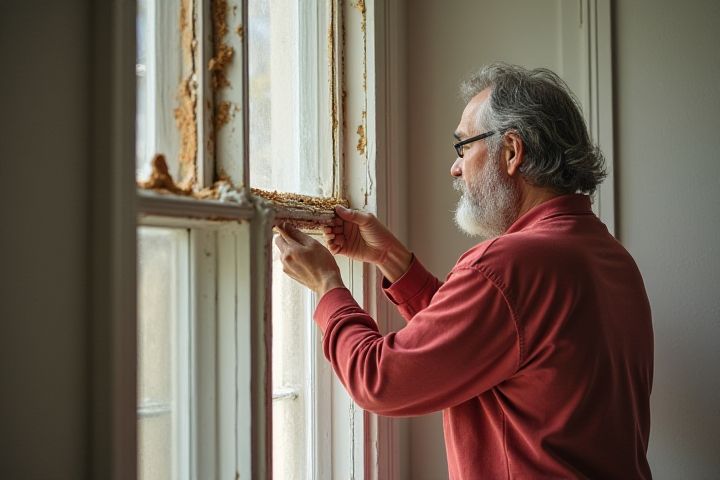
Assessing house damage involves a systematic evaluation of both interior and exterior elements. Begin by inspecting the roof for missing shingles or leaks, as these can indicate water intrusion. Check walls for cracks, discoloration, or mold, which may suggest structural issues or moisture buildup. Moving indoors, evaluate the plumbing for leaks and the electrical systems for burnt outlets or flickering lights, as these can pose safety hazards. Document your findings and consider engaging a professional inspector to ensure compliance with local building codes and safety standards.
How To Assess House Damage
Structural integrity
Begin by inspecting the foundation for cracks, uneven settling, or shifting, as structural integrity starts from the ground up. Next, evaluate load-bearing walls for signs of bowing or cracking, which can indicate serious issues; a common threshold is that cracks wider than 1/4 inch may require professional assessment. Pay attention to the roof's condition, checking for sagging or missing shingles, which could signify underlying structural problems. In your assessment, don't overlook the importance of looking for water damage, as prolonged exposure can weaken materials and compromise the overall stability of the house.
Roof condition
To assess roof damage, start by inspecting for missing or damaged shingles, as these are indicators of potential leaks. Check for sagging areas, which may suggest underlying structural issues or water pooling. Examine the flashing around vents and chimneys for rust or gaps, as compromised flashing can allow water infiltration. If you notice water stains on ceilings or walls, assess the roof's underside in the attic for moisture or mold, which can signify hidden damage.
Foundation issues
Inspecting your home's foundation is crucial for assessing potential damage. Look for cracks larger than 1/4 inch in width, which may indicate significant structural problems. Check for uneven floors or doors that stick, as these can signal shifting foundations. You should also evaluate the surrounding drainage; improper water flow can lead to foundation issues, requiring an analysis of gutters and downspouts.
Water damage
To assess water damage in your house, first inspect the affected areas for visible signs like discoloration on walls, sagging ceilings, and warped flooring. Examine your plumbing fixtures, including faucets and pipes, to identify leaks or drips that could contribute to ongoing water issues. Assess the presence of mold or mildew, which often indicates prolonged moisture exposure in hidden spaces like basements or under cabinets. Lastly, consider using moisture meters to quantify the extent of water intrusion in materials, guiding your repair strategy effectively.
Electrical systems
Inspecting the electrical systems for house damage begins with checking the circuit breaker panel for tripped breakers or signs of burning, which indicate potential electrical issues. Next, examine outlets and switches for discoloration, buzzing sounds, or a burning smell, as these may suggest faulty wiring or connections. Evaluate the condition of exposed wiring in the basement or attic, ensuring there are no frayed or damaged cables that could pose a risk. If you notice any abnormalities, it's advisable to consult a licensed electrician to conduct a comprehensive assessment and ensure your electrical systems are safe and compliant with local codes.
Plumbing leaks
To assess house damage from plumbing leaks, start by checking visible signs such as water stains, mold growth, or warped flooring. Use a moisture meter to detect hidden water intrusion in walls or ceilings; readings over 16% moisture content indicate potential issues. Inspect under sinks, around toilets, and near appliances for pooling water or rusted pipes. Document any discovered damage, including the location and severity, to provide a comprehensive overview for your insurance claim or repair plan.
Mold and mildew
To assess house damage from mold and mildew, first inspect areas prone to moisture, such as basements, bathrooms, and under sinks. Look for discoloration, musty odors, or visible fungal growth on walls, ceilings, and furniture, as these are key indicators of mold infestations. Use a moisture meter to measure humidity levels, as high readings can signify conducive conditions for mold growth, warranting further investigation. Document any findings with photographs and detail the extent of the damage to facilitate necessary remediation efforts and ensure a safe living environment.
HVAC system functionality
To assess house damage with a focus on HVAC system functionality, inspect the system for any visible signs of wear or damage, such as broken ductwork, rusted components, or disconnected vents. Check the thermostat settings and functionality, ensuring they respond correctly to temperature changes, as an unresponsive thermostat can indicate underlying issues. Measure the airflow at various vents using an anemometer; significant discrepancies could suggest blockages or system inefficiencies. Finally, evaluate the condition of the filters, as a clogged filter not only reduces efficiency but can also lead to further damage within the HVAC system if not addressed, impacting indoor air quality and overall comfort in your home.
Pest infestations
Inspect your home for signs of pest infestations, such as droppings, gnaw marks, or nesting materials, particularly in hidden areas like basements, attics, and behind appliances. Evaluate the structural damage caused by pests like termites or carpenter ants, which can compromise wood beams, framing, and insulation. Look for discoloration or bubbling in walls and ceilings, indicating moisture issues that pests may exacerbate. Conducting a comprehensive assessment not only helps identify pest-related damage but also enables effective pest control strategies and restoration efforts to protect your property.
Exterior wear
Inspect your home's exterior for visible signs of wear, such as peeling paint, cracked siding, or missing shingles, which can indicate underlying issues. Pay attention to foundational cracks exceeding 1/4 inch, as they may jeopardize structural integrity. Examine gutters and downspouts for clogs or detachment, as proper drainage is crucial in preventing water damage. Regular maintenance, ideally twice a year, can help you mitigate potential repairs, ensuring your home's longevity and safety.
